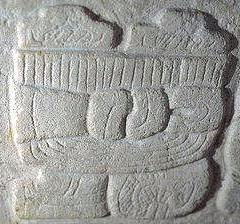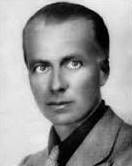|
Uaxactun
Uaxactun (pronounced ) is an ancient sacred place of the Maya civilization, located in the Petén Basin region of the Maya lowlands, in the present-day department of Petén, Guatemala. The site lies some north of the major center of Tikal. The name is sometimes spelled as Waxaktun. History of discovery With recent achievements in the decipherment of the ancient Maya hieroglyphic writing system, it has been determined that the ancient name for this site translates roughly as ''Siaan K'aan'' or "Born in Heaven". The name ''Uaxactun'' was given to the site by its rediscoverer, archaeologist Sylvanus Morley, in May 1916. He coined the name from Maya words ''Waxac'' and ''Tun'', to mean "Eight Stones". The name has two meanings; Morley's stated reason for the name was to commemorate it as the first site where an inscription dating from the 8th Baktún of the Maya calendar was discovered (making it then the earliest known Maya date). The other meaning is a pun, since "Uaxactun" so ... [...More Info...] [...Related Items...] OR: [Wikipedia] [Google] [Baidu] |
Tikal
Tikal (; ''Tik'al'' in modern Mayan orthography) is the ruin of an ancient city, which was likely to have been called Yax Mutal, found in a rainforest in Guatemala. It is one of the largest archaeological sites and urban centers of the Pre-Columbian era, pre-Columbian Maya civilization. It is located in the archaeological region of the Petén Basin in what is now northern Guatemala. Situated in Petén Department, the site is part of Guatemala's Tikal National Park and in 1979 it was declared a UNESCO World Heritage Site. Tikal was the capital of a state that became one of the most powerful kingdoms of the ancient Maya. Though monumental architecture at the site dates back as far as the 4th century BC, Tikal reached its apogee during the Mesoamerican chronology, Classic Period, c. 200 to 900. During this time, the Maya city, city dominated much of the Maya region politically, economically, and militarily, while interacting with areas throughout Mesoamerica such as the great metr ... [...More Info...] [...Related Items...] OR: [Wikipedia] [Google] [Baidu] |
Mesoamerican Chronology
Mesoamerican chronology divides the history of pre-Columbian, prehispanic Mesoamerica into several periods: the Paleo-Indian (first human habitation until 3500 BCE); the Archaic (before 2600 BCE), the Preclassic or Formative (2500 BCE – 250 CE), the Classic (250–900 CE), and the Postclassic (); as well as the post European contact Colonial Period (1521–1821), and Postcolonial, or the period after independence from Spain (1821–present). The periodisation of Mesoamerica by researchers is based on archaeological, ethnohistorical, and modern cultural anthropology research dating to the early twentieth century. Archaeologists, ethnohistorians, historians, and cultural anthropologists continue to work to develop cultural histories of the region. Overview Paleo-Indian period 18000–8000 BCE The Paleo-Indian (less frequently, ''Lithic stage, Lithic'') period or era is that which spans from the first signs of human presence in the region, which ... [...More Info...] [...Related Items...] OR: [Wikipedia] [Google] [Baidu] |
Maya Civilization
The Maya civilization () was a Mesoamerican civilization that existed from antiquity to the early modern period. It is known by its ancient temples and glyphs (script). The Maya script is the most sophisticated and highly developed writing system in the pre-Columbian Americas. The civilization is also noted for its art, architecture, mathematics, calendar, and astronomical system. The Maya civilization developed in the Maya Region, an area that today comprises southeastern Mexico, all of Guatemala and Belize, and the western portions of Honduras and El Salvador. It includes the northern lowlands of the Yucatán Peninsula and the Guatemalan Highlands of the Sierra Madre, the Mexican state of Chiapas, southern Guatemala, El Salvador, and the southern lowlands of the Pacific littoral plain. Today, their descendants, known collectively as the Maya, number well over 6 million individuals, speak more than twenty-eight surviving Mayan languages, and reside in nearly the s ... [...More Info...] [...Related Items...] OR: [Wikipedia] [Google] [Baidu] |
Spearthrower Owl
"Spearthrower Owl" (possibly ''Jatz'om Kuy'', translating to "Striker Owl") was a Mesoamerican person from the Mesoamerica#Early Classic, Early Classic period, who is identified in Maya script, Maya inscriptions and iconography. Mayanist David Stuart (Mayanist), David Stuart has suggested that Spearthrower Owl was a ruler of Teotihuacan at the start of the height of its influence across Mesoamerica in the 4th and 5th century, and that he was responsible for an intense period of Teotihuacan presence in the Maya area, including the conquest of Tikal in 378 CE. Name "Spearthrower Owl" is a name invented by archaeologists to describe the Teotihuacan-originated spear-thrower, atlatl-holding owl symbol, stylised as one or two Maya glyphs usually used to represent his name. One version of the ruler's name glyph shows a weapon (an atlatl or other type) combined with an owl sign. At Tikal, the name appears written once with phonetic elements, suggesting the Mayan version of the name is '' ... [...More Info...] [...Related Items...] OR: [Wikipedia] [Google] [Baidu] |
Sylvanus Morley
Sylvanus Griswold Morley (June 7, 1883September 2, 1948) was an American archaeologist and epigrapher who studied the pre-Columbian Maya civilization in the early 20th century. Morley led extensive excavations of the Maya site of Chichen Itza on behalf of the Carnegie Institution and published several large compilations and treatises on Maya hieroglyphic writing. He also wrote popular accounts on the Maya for a general audience. To his contemporaries, "Vay" Morley was one of the leading Mesoamerican archaeologists of his day. Although more recent developments in the field have resulted in a re-evaluation of his theories and works, his publications, particularly on calendric inscriptions, are still cited. In his role as director of various projects sponsored by the Carnegie Institution, he oversaw and encouraged many others who later established notable careers in their own right. His commitment and enthusiasm for Maya studies helped inspire the necessary sponsorship for proj ... [...More Info...] [...Related Items...] OR: [Wikipedia] [Google] [Baidu] |
Frans Blom
Frans Blom (9 August 1893 – 23 June 1963) was a Danish explorer and archaeologist. He was most associated with his research of the Maya civilization of Mexico and Central America. Biography Frans Ferdinand Blom was born in Copenhagen, Denmark to a middle-class family of antique merchants. He passed a matriculation exam at Rungsted and received a trade education in Germany and Belgium. He started travelling, eventually reaching Mexico in 1919, where he found work in the oil industry, conducting map and geological survey of the states of Veracruz, Tabasco, and Chiapas. Travelling to remote locations in the Mexican jungle, he became interested in the Maya ruins which he encountered where he was working. He started drawing and documenting these ruins. After he showed his work to the National Museum of Anthropology (Mexico), it financed some of his expeditions. In 1922 he left the oil industry following a bout of malaria. He met American archaeologist and Mesoamerican s ... [...More Info...] [...Related Items...] OR: [Wikipedia] [Google] [Baidu] |
Teotihuacán
Teotihuacan (; Spanish: ''Teotihuacán'', ; ) is an ancient Mesoamerican city located in a sub-valley of the Valley of Mexico, which is located in the State of Mexico, northeast of modern-day Mexico City. Teotihuacan is known today as the site of many of the most architecturally significant Mesoamerican pyramids built in the pre-Columbian Americas, namely the Pyramid of the Sun and the Pyramid of the Moon. Although close to Mexico City, Teotihuacan was not a Mexica (i.e. Aztec) city, and it predates the Aztec Empire by many centuries. At its zenith, perhaps in the first half of the first millennium (1 CE to 500 CE), Teotihuacan was the largest city in the Americas, with a population of at least 25,000, but has been estimated at 125,000 or more, making it at least the sixth-largest city in the world during its epoch. The city covered and 80 to 90 percent of the total population of the valley resided in Teotihuacan. Apart from the pyramids, Teotihuacan is also ... [...More Info...] [...Related Items...] OR: [Wikipedia] [Google] [Baidu] |
Giacinto Scelsi
Giacinto Francesco Maria Scelsi (; 8 January 1905 – 9 August 1988, sometimes cited as 8 August 1988) was an Italian composer who also wrote surrealist poetry in French. He is best known for having composed music based around only one pitch, altered in all manners through microtonal oscillations, harmonic allusions, and changes in timbre and dynamics, as paradigmatically exemplified in his ''Quattro pezzi su una nota sola'' ("Four Pieces on a single note", 1959). This composition remains his most famous work and one of the few performed to significant recognition during his lifetime. His musical output, which encompassed all Western classical genres except scenic music, remained largely undiscovered even within contemporary musical circles during most of his life. Today, some of his music has gained popularity in certain postmodern composition circles, with pieces like his "Anahit" and his String Quartets rising to increased prominence. Scelsi collaborated with American compo ... [...More Info...] [...Related Items...] OR: [Wikipedia] [Google] [Baidu] |
Linda Schele
Linda Schele in 1994. Linda Schele (October 30, 1942 – April 18, 1998) was an American Mesoamerican archaeologist who was an expert in the field of Maya epigraphy and iconography. She played a central role in the decoding of much of the Maya script. She produced a massive volume of drawings of stelae and inscriptions, which, following her wishes, are free for use to scholars. In 1978, she founded the annual ''Maya Meetings'' at The University of Texas at Austin. She was from Hendersonville, TN, a northern suburb of Nashville. Her mother Ruby Richmond was active in historic preservation at Historic Rock Castle in the 1980s. Early life Born in Nashville, Tennessee, Linda Schele began taking commercial art courses at the University of Cincinnati in 1960 and graduated in Education and Art in 1964. With an increasing interest in literature, she spent another four years in Cincinnati's graduate program and obtained her master's degree in Art in 1968. She married the architect D ... [...More Info...] [...Related Items...] OR: [Wikipedia] [Google] [Baidu] |






